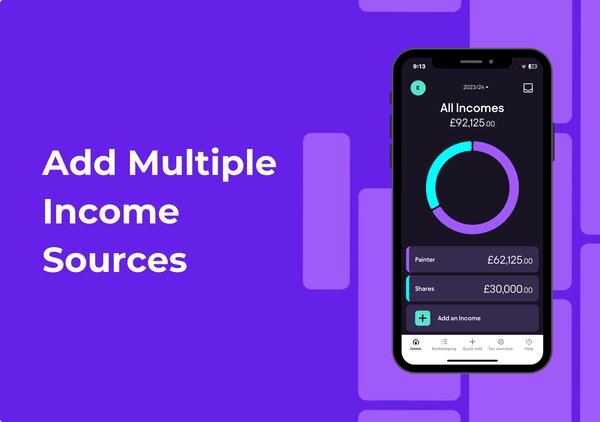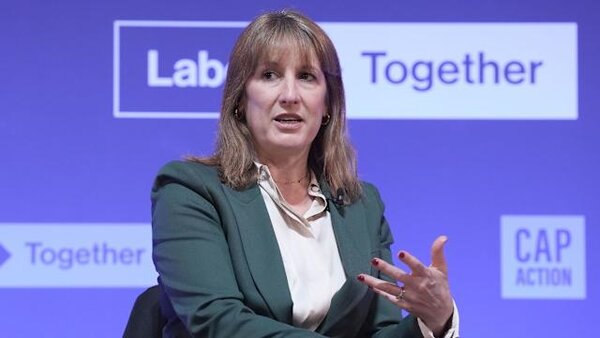Lets get started...
Keeping up with tax rules can feel like trying to hit a moving target. This is especially true for landlords dealing with mortgage interest on their rental properties, as managing a rental business involves understanding specific tax relief eligibility and how property letting activities are treated for tax purposes.
The way you claim tax relief on your buy-to-let mortgage has changed dramatically in recent years. These changes will still be in effect for your 2026 self assessment, making it essential to understand the current system.
Many property owners find these rules confusing and potentially costly. That’s why we’ve put together this straightforward guide to help you navigate the complexities with confidence and ensure you meet your tax obligations as a landlord or property owner.

What exactly is mortgage interest tax relief self assessment 2026?
Mortgage interest tax relief self assessment 2026 refers to how landlords can claim tax benefits for the interest paid on property loans in the 2025-2026 tax year. Since 2020, the system has operated quite differently from previous years.
Landlords can no longer deduct mortgage interest directly from their rental income before calculating tax. Instead, you now get a 20% tax credit on your mortgage interest, a system that will remain in place for your 2026 self assessment. Landlords must now calculate tax based on their taxable profits, which include all rental income minus allowable expenses (excluding mortgage interest).
This means if you pay £5,000 in mortgage interest, you’ll get a £1,000 reduction on your final tax bill. The rules apply to interest on a mortgage loan, other property loans, and even some fees related to obtaining these loans for rental properties.
How has mortgage interest relief changed over time?
Before 2017, landlords could simply deduct all mortgage interest from rental income before working out their tax bill. This provided significant tax advantages, particularly for higher-rate taxpayers. Under this old system, landlords could claim a tax deduction for mortgage interest, which reduced their rental profits subject to tax.
Between 2017 and 2020, the system gradually shifted to the current tax credit approach. For example, under the old system, if you earned £10,000 in rent and paid £6,000 in mortgage interest, you’d pay tax on just £4,000.
Now, you pay tax on the full £10,000 but get a 20% tax credit on the £6,000 interest. Landlords must now claim expenses separately and cannot deduct mortgage interest directly from their rental profits. This change hit higher-rate taxpayers hardest, while basic-rate taxpayers saw less impact, though some found themselves pushed into higher tax brackets.
Who can claim mortgage interest relief in 2026?
Individual landlords with mortgages on residential rental properties can claim the tax credit. The relief applies specifically to buy-to-let mortgages, not residential mortgages on your own home.
A limited company can still deduct mortgage interest as a business expense, which is a key difference from individual ownership. Many landlords choose to operate through a limited company for tax efficiency. A private limited company is a specific type of limited company that is a separate legal entity, offering advantages such as tax planning opportunities, profit extraction, and the ability to transfer shares.
If you own property jointly with another person, such as a spouse, civil partner, or others, the tax credit is typically split based on your ownership share. Overseas properties may also qualify if you pay UK tax on the rental income, and this rental income is considered alongside your other income for tax purposes.

How do I report mortgage interest on my 2026 self assessment?
You’ll need to complete the property section of your self assessment tax return. Landlords must accurately complete their tax returns, including self assessment tax returns and the annual tax return, to report all relevant information. Include your full rental income, all allowable business expenses, and business or property income (excluding mortgage interest) in the main property section.
Then enter your mortgage interest separately in the dedicated section for “Loan Interest and Other Financial Costs.” The 20% tax reduction will be automatically calculated and applied to your final tax bill.
Keep all mortgage statements and loan documents as evidence in case HMRC asks questions. In my experience helping clients with their returns, those with organised records find this process much less stressful.
Property allowance and tax benefits in 2026
For the 2026 tax year, the property allowance remains a valuable tool for residential landlords looking to reduce their tax liability. This allowance lets individuals earn up to £1,000 in property income from residential properties without having to pay income tax on that amount. If your rental income is modest, claiming the property allowance can be a straightforward way to minimise your taxable income and simplify your tax return.
It’s important to note that the property allowance can be used alongside other tax reliefs, such as mortgage interest tax relief, but you cannot claim both the allowance and deduct expenses for the same property income. This means you’ll need to decide whether claiming the property allowance or deducting actual expenses (including mortgage interest) gives you the greatest tax benefit.
Understanding how the property allowance interacts with other forms of tax relief is essential for effective tax planning. By making the most of available allowances and reliefs, you can ensure you’re not paying more tax than necessary on your property income in 2026.
Capital gains tax implications for property owners in 2026
If you’re considering selling a residential property in 2026, it’s crucial to understand how capital gains tax (CGT) could affect your finances. The CGT allowance for individuals in the 2026 tax year is £3,000, while trustees have an allowance of £1,500. When you sell a property, you may need to pay capital gains tax on the profit (the difference between the sale price and the original purchase price), after deducting any allowable expenses and your CGT allowance.
Private residence relief can help reduce or eliminate your CGT liability if the property has been your main home. However, if you’re selling a buy to let property or another investment property, you may not qualify for this relief, and it’s especially important to keep detailed records of your purchase price, sale price, and any capital improvements made over the years.
Because capital gains tax rules can be complex and the implications significant, it’s wise to seek professional advice before selling residential properties. This will help you understand your tax position, claim any available reliefs, and ensure you’re not caught out by unexpected tax bills in the 2026 tax year.

Record keeping and accounting for mortgage interest tax relief
Accurate and organised record keeping is essential for residential landlords who want to claim mortgage interest tax relief on their rental properties. To claim tax relief on your self assessment tax return, you’ll need to keep detailed records of all mortgage interest payments made during the tax year, as well as other expenses incurred, such as utility bills and council tax.
When completing your self assessment, only the interest portion of your mortgage payment is eligible for tax relief, not the capital repayment. Make sure you keep mortgage statements and any supporting documents that clearly show the interest paid. This will make it easier to claim tax relief and respond to any queries from HMRC.
It’s also important to understand the rules around finance costs and how they affect your tax liability. For example, basic rate taxpayers can claim mortgage interest tax relief at 20%, while higher rate taxpayers are restricted to the basic rate for this relief. By keeping detailed records and understanding what expenses are allowable, you can maximise your tax relief and minimise your tax bill.
Are there ways to make the most of mortgage interest relief?
Some landlords have moved their properties into limited companies to benefit from different tax treatment. In these cases, company profits from property letting are subject to corporation tax, which differs from personal income tax and has its own rates and filing requirements. Others have reviewed their portfolio, selling high-mortgage properties and keeping those with lower borrowing.
Refinancing might make sense in some cases, but always consider the costs involved. Timing major property expenses carefully, managing business costs, and identifying key expenses can help offset the impact of the mortgage interest changes and improve your tax planning.
Getting advice from a tax advisor before making big decisions is always worth the investment to ensure you meet your tax obligations. The right strategy depends on your individual circumstances, including your total income and long-term property plans.

Common questions about 2026 mortgage interest relief
Can I carry forward unused relief? No, the tax credit applies only to the current tax year.
What about other property loans? The relief covers most loans used to buy, improve or repair rental properties.
Are capital repayments on my mortgage tax deductible? No, only the interest portion of a mortgage is eligible for tax relief as an allowable expense. Capital repayments are not deductible.
What is the difference between capital expenses, capital expenditure, and allowable expense? Capital expenses and capital expenditure refer to long-term improvements or assets, which are not immediately tax deductible but may be relevant for Capital Gains Tax. Allowable expenses are day-to-day running costs, such as mortgage interest or repairs, that are tax deductible against rental income.
Does the relief apply to commercial properties or investment properties? The relief and finance cost restrictions apply to both residential and commercial properties, including commercial property and investment properties. If you have loans for both residential and commercial properties, you must apportion the interest accordingly.
How is stamp duty land tax calculated? Stamp Duty Land Tax (SDLT) is based on the property value and the initial cost of the property at purchase. Higher property values attract higher SDLT rates, and different thresholds apply depending on the type of property and buyer.
What qualifies as a dwelling house for relief purposes? A dwelling house is a residential property used as a home, either for letting or personal use. Reliefs such as the Replacement of Domestic Items only apply to a person's dwelling house.
Is inheritance tax relevant for landlords and property investors? Yes, inheritance tax can impact landlords and property investors, especially in estate planning. It's important to consider inheritance tax thresholds and consult a professional to manage potential liabilities.
Will the rules change again? While possible, no changes have been announced for 2026 yet.
How is the relief calculated for multiple properties? The tax credit applies to the total interest across all your rental properties.
What if I sell a mortgaged property? You can claim relief on interest paid up to the sale date.
Planning ahead for your 2026 tax return
Understanding mortgage interest tax relief now will save you headaches when completing your 2026 self assessment. The 20% tax credit system isn’t as generous as the old rules for many landlords, so planning is essential.
Keep meticulous records of all mortgage interest and related costs throughout the year. Consider how your property income fits into your overall tax picture, alongside other sources such as trading income and self employed profits, especially if you’re near a tax threshold.
Pie is the UK’s first personal tax app, dedicated to helping working individuals overcome their tax burdens. It stands out as the only self assessment solution that offers integrated bookkeeping, real-time tax figures, and simplified tax return processing. When planning for your property business, make sure to account for each rental property and the specific tax implications involved.
With the right approach and tools like Pie tax, you can navigate mortgage interest relief confidently. Ensure you claim expenses correctly and make all allowable deductions for tax purposes. Taking control of your tax planning now ensures you won’t pay more tax than necessary on your property income in 2026.

Quick and Easy Guide to Reconciling Mortgage Interest in the Pie App
Follow these steps to get started:
Once you’ve created an income source, you can proceed to the bookkeeping section of the app on your navigation bar. Swipe right on any eligible transaction to add it as Mortagage Interest expense you want to declare on your tax return, moving it to the & ‘expense’ tab.Step 1

After adding all the information, you can view your real-time figures on the homepage of the Pie Tax App.Step 2












